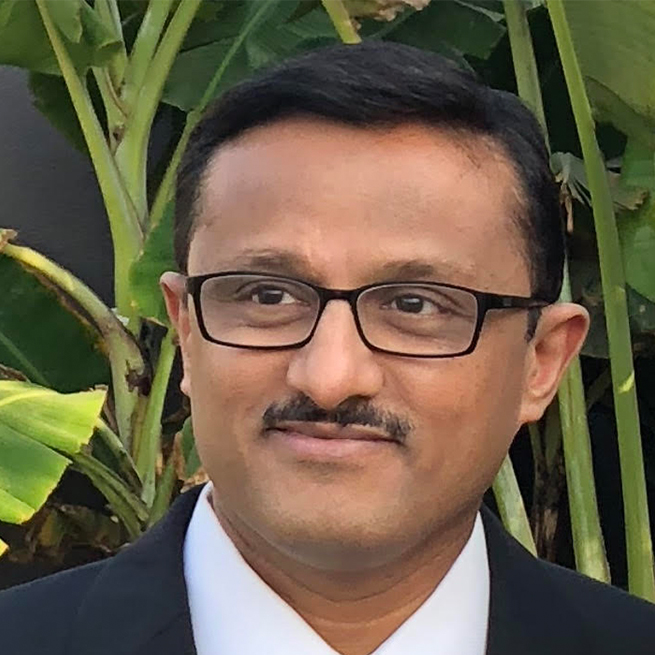India, Malaysia and Singapore are different and diverse places – as are their respective ophthalmic markets. India now has one of the fastest growing ophthalmic markets in the world, while Malaysia’s market is still developing, and Singapore’s is already quite established.
So, what do these ophthalmic markets have in common? And how do their needs differ? PIE Magazine examines the big picture of ophthalmology in India, Singapore and Malaysia, delving into the challenges doctors in these countries face, as well as their successes.
The current landscape
In India, the ophthalmic market is estimated to be worth $1.8 billion by 2022.The country is also home to 30% of the world’s blind population.1 Dr. Alay Banker runs his own retinal specialist clinic, as well as a multidisciplinary charitable hospital in Ahmedabad, India. Over the last 21 years, he notes that the advancement of tools has helped to speed up procedures: “In the past, a complex vitreoretinal surgery case would last four to six hours without good visualization assistance. Now, when you open the eyes the next day, it’s very difficult to judge which eye you’d operated on.”
Consultant ophthalmologist and vitreoretinal professor at the National University of Malaysia’s Ophthalmology Department, Dr. Mae-Lynn Bastion agrees: “Today’s 25- and 27-gauge instruments mean shorter preparation and closure time,” she said. “For certain surgeries, they may not be ideal … but with experience and skills, they make posterior work better overall.” Malaysia is still a developing market. While it’s packed with possibilities and rising demands for ophthalmic care, there are still funding limitations in research and human resources.3
In Singapore, major ophthalmic business leaders, like lens companies, have long leveraged the city-state’s “environment that facilitates development of innovative therapies, pre-clinical development, clinical trials and translational research.”2 Dr. Chin Chee Fang, head of the neuro-ophthalmology subspecialty unit of the government restructured Tan Tock Seng Hospital (TTSH) in Singapore, says she has witnessed improvements in her subspecialty: “It has advanced as diagnostic modalities have become more detailed with better resolution, such as the increased use of spectral-domain optical coherence tomography for diagnosis and monitoring of patients.”
The impact of technology
Clearly, improvements in technology have greatly impacted the field of ophthalmology. However, access to these innovations – either due to unavailability or cost –can prove challenging.
Imaging systems, like those mentioned by Dr. Chin, have also emerged in India and Malaysia, although 3D surgery technology has yet to penetrate the Malaysian market. This is partly because resources can’t always keep up with fast-changing technology. “Cost is a major issue with newer technology, particularly in India where most people can’t afford things and don’t have insurance. So, that’s a slight barrier and you have to find ways to deal with it,” said Dr. Banker.
India has broken this barrier by developing its own technology. “We’re lucky to have many entrepreneurs in India who are manufacturing fairly competitive machines at about half the price of the imported ones. And we are able to give almost equal results,” shared Dr. Banker.
According to Dr. Banker, the success of affordable instrumentation has translated into more vitreoretinal surgeons in smaller Indian cities. This is huge in terms of early diagnosis, prevention and treatment.
Overcoming barriers
In Malaysia, besides a demand for more ophthalmologists in public service, high costs for posterior segment surgeries remains a hurdle for patients. Accessibility is also a challenge because of stringent official regulations for importing medical equipment. “It’s good there’s quality control, but it also means we are unable sometimes to do research with equipment that is available overseas but has not been used previously in Malaysia,” said Dr. Bastion.
To overcome this, Malaysian ophthalmologists work closely with instrument and equipment companies to best help patients. To overcome equipment costs and accessibility in India, Dr. Banker says doctors share resources through inter-institutional loans of tools and equipment through Whatsapp chat groups.
Dr. Chin says that they’re fortunate to enjoy the availability of new technology in Singapore. However, the question remains if new technology necessarily translates in better clinical care or patient outcomes: “Balancing the financial costs and clinical benefits is crucial.”
Having the right equipment has made a difference: “In Malaysia, we have good results for vision, for reattachment, and we have very low rates of reoperation,” said Dr. Bastion. She also sees a great potential for ophthalmology research in Malaysia, but wishes they had better support and funding.
In India, Dr. Banker would like to see universal healthcare insurance for all patients. In addition, he hopes that a centralized national eye database could be established: “That would help us identify diseases and loopholes in our medical healthcare system – like which region has a certain prevalence or lack of facilities.”
Singapore’s biggest challenge comes in the form of its aging population. “It has led to a much higher patient load, and an increase in age-related conditions. Diabetes is also an increasing health problem, bringing with it many potential complications involving the eye,” said Dr. Chin. However, things continue to march onward in Singapore. Dr. Chin says: “Later this year, a national initiative for community eye care will commence, which will enable stable patients to be managed effectively and safely in the community, thus reducing the need to be seen in tertiary care centers. Hopefully, this shared responsibility brings about better patient care, better treatment compliance and informed expectations.”
References:
1 India Ophthalmic Market Forecast to Reach $1.8 Billion by 2022. July 17, 2017. Available at: https://eyewire.news/articles/india-ophthalmic-market-forecast-to-reach-18-billion-by-2022
2 Young, M. A tiny island: The new epicenter of Asian eyecare. July 08, 2016. Available at: https://www.eyeworld.org/article-a-tiny-island—the-new-epicenter-of-asian-eyecare3 Foo C, Lim K, Sheamini S, Kamilah D, Goh P. Improving the effectiveness of service delivery in the public healthcare sector: The case of ophthalmology services in Malaysia. BMC Health Serv Res. 2015; 15: 349.






